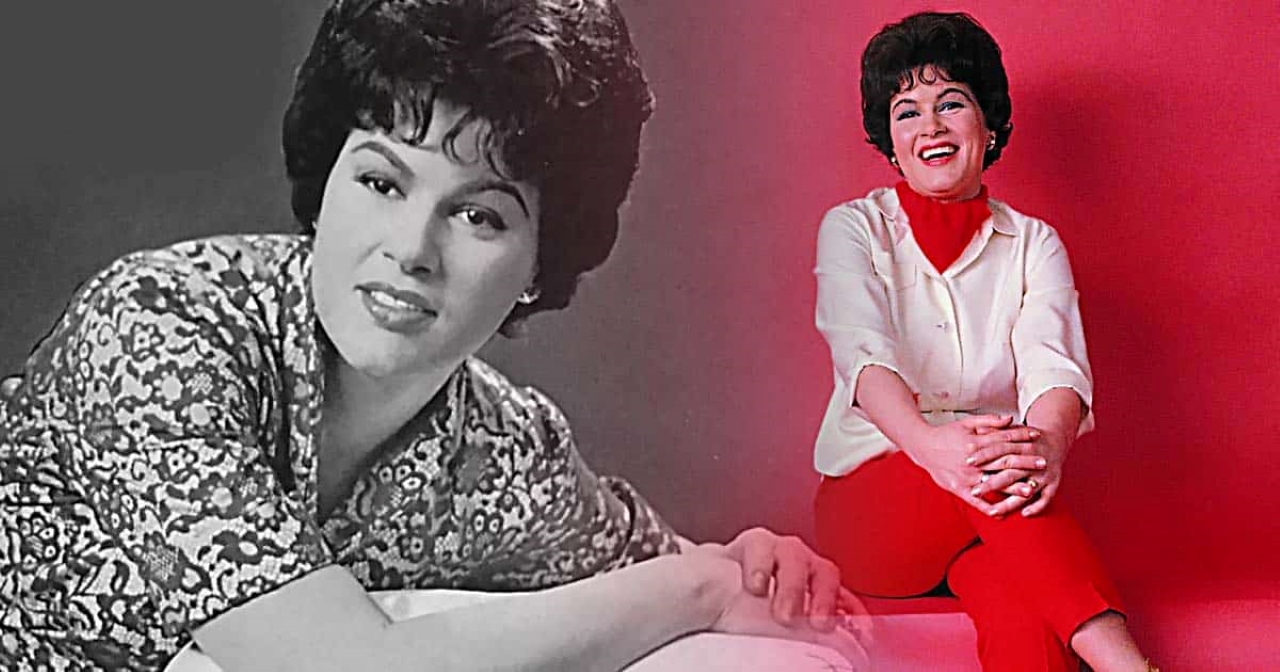🎶 A SONG THAT NOBODY WANTED TO SING
The story of I Fall to Pieces began not with Patsy Cline, but with two Nashville songwriters: Hank Cochran and Harlan Howard. In 1960, they sat in a small room, chain-smoking, and scribbling lyrics on yellow paper. They wanted to capture that feeling of heartbreak when someone you love drifts away — not with dramatic anger, but with quiet devastation. Harlan strummed a few chords and mumbled, “I fall to pieces, each time I see you again…”. Hank looked up and said, “That’s it. That’s the song.”
But when they pitched it around Nashville, rejection followed them everywhere. Singers thought it was too slow, too painful, too “morbid” for the radio. It passed through Brenda Lee’s hands, then Roy Drusky’s, who laughed and told them, “I wouldn’t sing that female song if you paid me.” For a moment, it seemed like the song was destined to die in a drawer. Until it landed in the hands of Patsy Cline.

🎤 PATSY HEARS THE SONG FOR THE FIRST TIME
Patsy was already a rising star by 1960. She had scored her first big hit with Walking After Midnight, but she struggled to find another success. When her producer, Owen Bradley, handed her I Fall to Pieces, she wasn’t convinced either. “It sounds like a pop song,” she complained. “I’m a honky-tonk girl. This isn’t me.”
But Bradley was insistent. He believed the world needed to hear Patsy sing it. He reminded her of something simple: “Great songs don’t belong to one style. They belong to whoever can tell the story best. And that’s you, Patsy.” Reluctantly, she agreed.
🎼 THE MAGIC IN THE STUDIO
The recording session in late 1960 was tense. Patsy arrived still nursing injuries from her recent car accident — cracked ribs, a broken wrist, scars that hadn’t yet healed. Singing hurt, but she refused to stop. The arrangement featured lush background vocals from the Jordanaires and a smooth Nashville Sound production, far from the raw honky-tonk Patsy was used to.
But when she opened her mouth, everything changed. Patsy sang the lyrics as if they were torn from her own diary. She slowed the tempo, lingered on the word “pieces,” and let her voice tremble just enough to sound vulnerable. What was once a song no one wanted suddenly became unforgettable.
📻 AN UNLIKELY HIT
At first, radio DJs didn’t know what to do with I Fall to Pieces. It was too pop for country, too country for pop. But then the listeners decided for themselves. Phone lines lit up at stations across the South and Midwest. People begged to hear it again. By August 1961, the song had reached #1 on the Billboard Country Chart and #12 on the Pop Chart, making Patsy one of the first true crossover stars in country music.
She had done the impossible — turned a “female song nobody wanted” into a classic that united audiences from honky-tonk bars to city ballrooms.
💔 WHY THE SONG HURTS SO MUCH
What made I Fall to Pieces different wasn’t just the melody. It was Patsy’s delivery. She didn’t sing it like a performer — she sang it like a woman barely holding herself together. Every time she stretched the word “pieces,” it was as if her voice was breaking alongside the lyric. She didn’t scream or cry; she simply let the sadness speak for itself.
The honesty resonated with fans. People who had lost love heard their own pain in her voice. People who had never been in love imagined what heartbreak must feel like. It was universal, timeless, and painfully real.
🚑 A LIFE MIRRORING THE SONG
The irony of I Fall to Pieces is that it seemed to foreshadow Patsy’s own struggles. Just months after the song hit #1, she was involved in the infamous 1961 car accident that nearly killed her. Lying in the hospital with broken ribs, she joked to a nurse, “Now I really know what it feels like to fall to pieces.”
She returned to the stage while still recovering, and fans noticed that her voice had gained even more depth. The pain she carried in her body and soul made every note of I Fall to Pieces even more haunting.
🌟 THE SONG’S LEGACY
Today, I Fall to Pieces is considered one of the greatest country songs of all time. It has been covered by dozens of artists — from Linda Ronstadt to LeAnn Rimes — but none have matched Patsy’s original. In 1999, it was ranked by Rolling Stone among the 500 Greatest Songs of All Time, and it remains a staple on jukeboxes and playlists more than six decades after its release.
For Willie Nelson, Loretta Lynn, Dolly Parton, and countless others, Patsy’s recording became a roadmap of how to fuse country storytelling with emotional honesty. It opened doors not just for her, but for every woman who came after her in Nashville.
🕯️ THE LASTING IMAGE OF PATSY
When Patsy died in the 1963 plane crash, fans clung to her music as a way to keep her alive. And I Fall to Pieces became more than a song — it became a prophecy. Every time the record spun, listeners felt the bittersweet ache of a talent gone too soon, a voice silenced before it could sing its full story.
But in that silence, the song kept living. Each time it plays today, Patsy returns, reminding us of the beauty that can rise from pain, the strength hidden inside heartbreak, and the truth that sometimes, when we fall to pieces, music is the only thing that can put us back together.